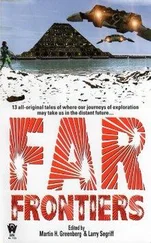What happened in the last 400 years
The beginning of faster-than-light space travel is dated to the mid-21st century. It all started with burnt chocolate muffins:
It was in a small apartment shared by two junior physics professors. Marinella Fregara was a dark matter expert. Marie-Louise Häberli was a theorist and advocate of quantum string theory with its ten curved and bent dimensions.
On a Sunday morning in 2044, Marinella was in the kitchen filling muffin batter into a muffin baking tray while Marie-Louise had commandeered the kitchen table and was writing a grant proposal. Once the muffins were in the oven, the two professors began a scientific discussion about dark matter and curled dimensions. It wasn't until the acrid smell came from the oven that the ladies ended the discussion and hastily went on a muffin rescue mission.
The burnt muffins were quickly retrieved from the oven, and Marie-Louise began gesturing excitedly, pointing to the burnt batter and reportedly saying, "That's exactly what I'm trying to explain; dark matter is nothing more than coked-up dimensional space-time!"
Thus, began the subspace research.
It took six months to calculate and publish the new theory, and another five years to provide experimental proof. This was immediately followed by the Nobel Prize. Yes, it was possible to open the access to a curved dimension.
Just like at the beginning of the 20th century, with the discovery of quantum physics, the new Häberlin-Ferrara dimension opens thousands of new possibilities. Subspace—as the curved dimension was colloquially known—not only enabled faster-than-light travel but also opened up new possibilities for energy generation and medicine. But more about that later.
For humanity, in the first ten years after the discovery of subspace, it was all just physicists playing around, with no real impact on life. But the first "journey" through subspace with a robot spaceship was still a sensation. Despite raging religious wars and the struggle for resources, a billion people watched this spectacle in real-time. It was much easier to open subspace gaps in space, so the experiment took place in geostationary orbit. And then the moment that profoundly changed the history of mankind:
In the first subspace crevice, the robot ship discovered an alien spaceship!
The huge spaceship was pulled out of the subspace crevice and brought down to earth.
It was several kilometers long and made of an unknown praseodymium-gadolinium alloy. The ship was just an empty carcass, but the mounts for the huge cannons were still clearly visible.
Of course, the “fake news” screamers and the conspiracy theorists were present, claiming that this was all a conspiracy theory made up by some governments.
But anyone could make a pilgrimage to the ship and take a look.
The biggest skeptics fell silent within seconds. The spaceship was so inhuman that no doubt remained: it could only be extraterrestrial.
But how old was it?
The dating gave values between 10 and 40000 years. Extrapolations showed that it had enough weapons potential to turn the earth into mud. And the alloy was so dense that no human weapons could harm the ship. Not even a Tsar bomb would do more than paint damage.
A horror gripped humanity: yes, there were aliens, and if they meant evil, humans would be doomed!
Suddenly religions, skin colors, politics, and everything else did not play a role anymore. They were all just vulnerable people on a single planet.
Peace treaties were signed in record time and everyone moved together. Money and selfish posturing was unimportant. Trillions were spent.
Fifty years later, the world looked very different. Electricity was cheaper than ever before—it was even free. It was generated by two giant phalanxes moving around the Earth's orbit, drawing electricity directly from the Earth's magnetic field like giant dynamos. The electric current was conducted directly to Earth through subspace tunnels. Electricity was plentiful, and freshwater could also be easily distributed around the world through the subspace pipeline. Since all the electricity had to be used somehow, seawater was evaporated to produce fresh water. Energy wasting was a must to keep the circuits from overheating.
But the biggest impact on each individual was not so much the newly burgeoning space travel and free electricity, but the brain scan. Based on subspace-science, this new technology made it possible for the first time to scan and understand the human brain at the neural level.
At last, doctors could determine where depression and many other mental illnesses originated. Now it is possible to develop targeted therapies. Depression, schizophrenia, and many other illnesses were a thing of the past.
But like almost all technologies, there was a downside. The brain scanner was like the ultimate lie detector, and you could almost read minds and also detect all sorts of predispositions. Pedophiles or psychopaths were taken out of circulation before they could even commit a crime. All kinds of crimes were easily punished: ten minutes in the brain scan and you knew who had committed which crime or planned to do so. Terrorists and other rebels could be arrested while they were planning a crime. Likewise, it became a habit that important politicians had to undergo a brain scan in public, after all, one had to prove that one had a clear conscience and wanted only the best for the people.
The 22nd 23rd centuries were the most peaceful that mankind had ever experienced. Going for a brain scan was a regular duty, and it helped to guide young people to the right professions as well as to detect problems and diseases in time.
The error rate, that is, the probability that an innocent person was wrongly convicted, was extremely low. And the five to ten people per year who were wrongly convicted, had very hard time to prove that the scanner was wrong. In this sense, the brain scan was a highly valued method. Along the way, a fleet of spaceships was created to protect Earth from danger. But during the next 350 years, no aliens were seen. Only at the end of the 24th century, during the great attack, they appeared for a few hours…
Space travel in subspace is a complicated matter. The human mind can't imagine a curved dimension, and you can't see, feel or hear it with any human sense. There were spaceships equipped with windows, you couldn't really see anything... really nothing, nothing at all. And if you stare out too long, you just get sick.
The subspace ships need a huge battery of sensors to display subspace. To make it somehow understandable for the human mind, the many ones and zeros were converted into a kind of sea chart. Subspace used terms from seafaring. There were currents, reefs, waves, tides, sandbanks, bays, and much more. In fact, subspace travel was more like sailing, because even 400 years after the discovery of subspace, ships had no active propulsion. The dive generator was used to get the ship into subspace, where it had to find currents and winds to get around.
Three zones were distinguished in subspace: First, the "surface water." Here space was only slightly curved and there were no currents or other hazards. But without propulsion, one stood still in this zone and no one was interested in being there. If a propulsion system were eventually developed, this zone would also have little interest, because here space was only slightly curved and you could not travel as fast as if you were deeper in subspace. Second, the lowest zone was called Abyss, just like in the sea. But also, here there was no wind, only with propulsion it would be interesting here: hundreds of light-years would be crossable within a few minutes. But even this zone remained closed to humans, and they had to be content with meso-subspace for the time being. The part of subspace where there were winds and currents that could be used, but which was also full of dangers...
Читать дальше












